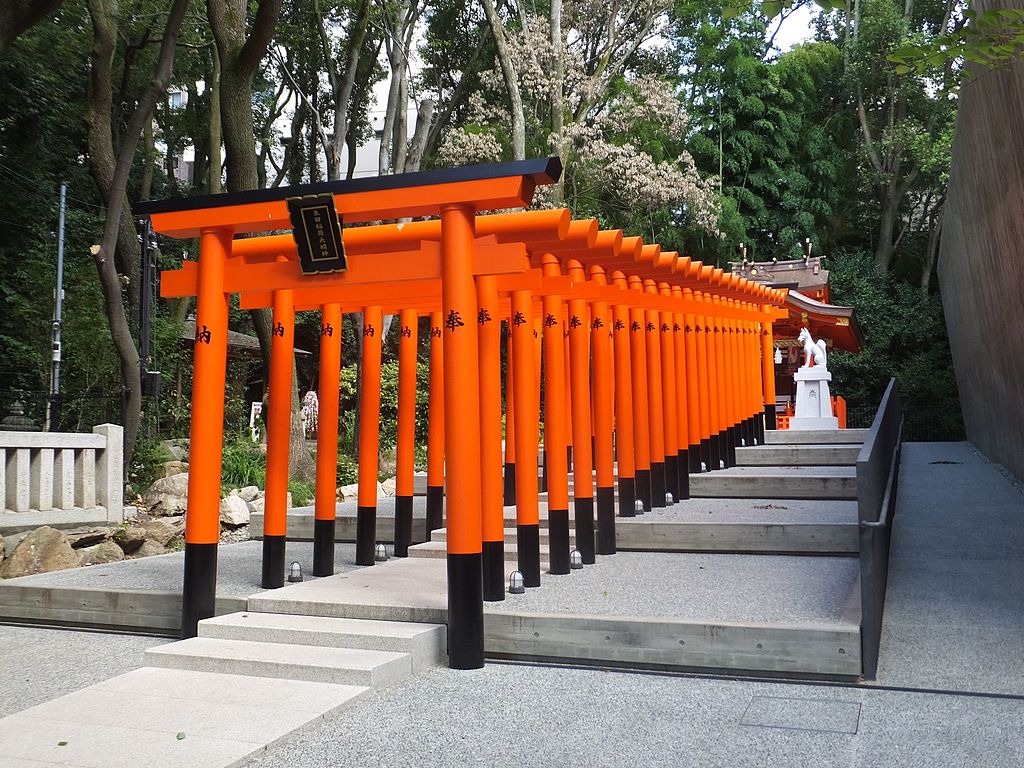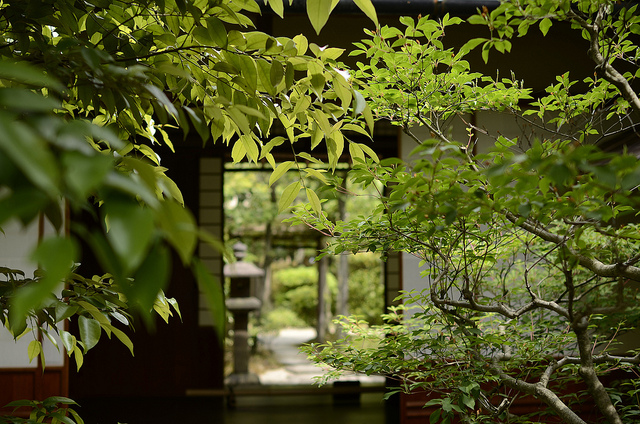Jan 23, 2018
8 Popular Historic Sites in Kobe

Places brimming with history exude that magical charm tourists cannot resist. It’s always on our list of must do’s when traveling to visit castles, temples, shrines, museums, churches and every single historical site that transports us back to the past. We marvel at the architectural craftsmanship and ingenuity of the men and women from centuries ago who built and lived around these works of art. It’s something, like shopping, that we never miss out on on our trips to places we’ve never been to before.
Japan, especially Kobe, is lush with history and cultural influences due to the amalgamation of the east and west as foreign trade was opened in the 1800’s. This port city now is dotted with the remainders of the communities that were set up by the Westerners as well as the preserved local sites that have survived and thrived despite the signs of the times. Tourists and locals continue to enjoy the beauty of the past and learn history at the same time. The list below is of the different popular sites everyone should visit when in Kobe.
Ikuta Shrine
If you love to watch historical plays, visit this prestigious shrine and be enthralled with the Noh plays, Ebira and Ikuta Atsumori, retelling the Genpei war during the late-Heian period. The shrine is the actual site of this war including the lands around it which was once still a part of the structure. The plays are performed every year during the Autumn Festival called Akimatsuri.
Kobe Kitano Museum
In 1898, this museum was built as the American consulate building. Today, now houses art works that displays the Kitano Ijinkan-gai and the masterpieces of the artists from the Montmartre district of Paris. It is also one of the most prominent buildings among the line of Western infrastructure that have been preserved for decades.
Yuzuruha Shrine
It’s history with a modern twist. Why? The shrine houses the symbol of soccer for Japan. Soccer players flock here to pray for good luck. It’s a typical shrine but its serene walking paths and pink cherry blossoms will give you the kind of peace you’re looking for in places of worship. For people who travel with dogs, you won’t have to worry about them getting thirsty after walking around with you because there’s a designated water fountain for them.
Sumadera
This Shingon-shu temple, also called Joya-san Fukusho-ji, was built in 886. Famous historical figures drew inspiration from the charming cherry blossoms and the vast grounds in writing poetry such as waka, haiku and even Chinese poems. If you love mechanical art, you’ll enjoy watching the pieces like marionette clocks that are displayed inside.
Nankinmachi (Chinatown)
There seems to always be a Chinatown in most cities in Asia and even the world. Kobe has one too which dates from 1868 when the city opened its port to foreigners. The Chinese who arrived in the area were called “people from Nanking” hence its name today. It is now the center of Chinese culture and activity in the Kansai region. Tourist flock to shop, dine and simply savor the fusion of cultures that this neighborhood has to offer.
Kitano-cho
Situated right at the foot of the Rokko mountain range, this city district was were the foreigners built their offices and houses when they arrived after the port was opened for foreign trade. The Ijinkan, as the mansions are called, are well preserved and were turned into museums for the public to enjoy and learn from. For a reasonable fee, you are able to view the original furniture and household artifacts that were once used by the residents. After visiting the museums, you can take a stroll and perhaps rest a bit and have coffee and pastries in one of the cafes in the area.
Kazamidori no Yakata
You will never miss the weathercock that proudly sits on a steeple in one of the buildings along Kitano-cho, thus, it’s also called the Weathercock Mansion. The rooster doesn’t only indicate the direction of the wind but also wards off evil spirits and promotes the Christian doctrine. Another name for it is the Old Thomas Residence. This brick colored structure is now considered an important cultural property of the country.
Arima Onsen
Tourists and locals alike love to take a dip in the hot springs in Kobe. It’s been famous for centuries as it has been mentioned in documents dating back in the 8th century A.D. Famous monks in the history of Japan, like Gyoki and Ninsai who lived five centuries apart were known to visit Arima and in fact the latter was completely enamored with the area so he helped in developing it. Other famous figures such as Hideyoshi Toyotomi spent some time here. Today, there are already more than 20 hotels and inns for everyone to choose from and relax in.
Photo by tak1701d (Own work) [GFDL or CC BY-SA 3.0], via Wikimedia Commons
Jan 22, 2018
Samurai Beauty at Inuyama’s Urakuen Garden Near Nagoya
One of the most interesting aspects of the samurai era is how they managed to marry a continual warlike state, enforced by a barbarous ruthlessness with an appreciative joy for the beauty in simplicity of their art forms. Today the city of Inuyama near Nagoya still manages to perfectly illustrate this duality.
Overlooking the city is Inuyama Castle,a Japanese National Treasure and one time home to the feared warlord Oda Nobunaga, the first of the country’s three great unifiers. But just a stone’s throw from that monument to the violent power that the Oda clan held over the region, is a stunning representation of the beauty and transience that the samurai, and the Oda, could demonstrate: Urakuen Japanese Garden and its adjoining Teahouse Joan.
History of Teahouse Joan
Designated a National Treasure in 1936, Teahouse Joan was designed by Oda Urakusai, younger brother to the warrior Nobunaga, and was first built in Kyoto in 1618 in the grounds of the Kyoto temple Kennin-ji. Urakusai, a great enthusiast for the tea ceremony who would renounce his own violent past, was a disciple of Sen no Rikyu, Japan’s most famous tea ceremony master, and in accordance with the strict rites and aesthetics of the Tea Ceremony, the teahouse is of a simple design. It has low, wooden shingle roofs and clay-clad bamboo lattices, and peering inside you can see a number of unique ‘fusuma’ paper sliding doors, as well as an ancient lunar calendar. Classic, elegent, strikingly simple, it is considered by many to be a masterpiece of teahouse architecture, and one of Japan’s three finest teahouses.
Urakuen Japanese Garden
Befitting of the home of such a charming representation of a nation’s cultural heritage, Urakuen Japanese Garden garden is designed with the aesthetic of the tea ceremony in mind. Named after Urakusai himself (the name roughly means Uraku’s gardens) like the teahouse Urakuen it is imbued with the concept of beauty in simplicity. Wandering along the stone-paved paths that cut through bamboo groves, you can feel the calmness and serenity that is associated with one of Japan’s most famous art forms.
Also at Urakuen
As well as the Joan Teahouse there are other buildings of interest within Urakuen. Based on designs of another Urakusai teahouse, Genan Teahouse is a restored building created in the ‘teishudoku’ form. If you want to actually take part in a ceremony for yourself (unfortunately this is not possible in Joan, due to its National Treasure status), Koan Teahouse is open for seasonal tea parties. For visitors all year round, at Syodenin Shoin, a building in which Urakusai spent much of his later life, you can enjoy drinking green tea on the veranda and eat delicious Japanese sweets unique to Urakuen, all served on locally made china.
Urakuen Japanese Garden Details
- Where: Within the grounds of the luxury Meitetsu Inuyama Hotel. 1, Gomonsaki, Inuyama-City, Aichi (map)
- When: The garden and teahouse is open 9:00 to 17:00, seven days a week (though times may vary by season
- Website: www.m-inuyama-h.co.jp/urakuen
- Admission: 1000 JPY for the garden, or 1300 JPY including access to Inuyama Castle. Guests of the Meitetsu Inuyama Hotel are entitled to a 200 JPY reduction.
By Mark Guthrie
Image by Bong Grit (Own work) [CC BY-SA 2.0], via flickr.com
Image by Yuya Tamai (Own work) [CC BY-SA 2.0], via flickr.com (modified)
Image by Yuya Tamai (Own work) [CC BY-SA 2.0], via flickr.com (modified)
Jan 20, 2018
Sake Tasting in Tokyo

Sake, of course, is famous around the world for being Japan’s national drink. Though the drinking of Chinese alcohol is thought to predate recorded history, it is believed that sake as it is currently known – made up of rice, water and ‘kōji’ mold – dates from around the Nara period (710 to 794), and then later used for religious ceremonies court festivals as well as drinking games.
Originally the production of sake (actually called ‘nihonshu’ in Japan, with ‘sake’ being a term to cover all alcoholic drinks) was the preserve of the government, but later it was made by temples and shrines. Nowadays there are many breweries, or ‘kura’ around the country (in 2007 there were approximately 1700 kura making around 10,000 different types of sake), so getting acquainted with it can be tough for the uninitiated. Thankfully, while the Tokyo area isn’t particularly famed for its sake production, you there are many places at which you can give it a taste.
Meishu Center – Minato-ku
The Meishu Center is probably one of the best known nihonshu tasting spots in the city. Although it has the appearance of a busy standing bar, it is in fact a sake promotional center that offers tastings. A tasting glass starts at 200 JPY, choosen from around 100 types of sake from about 40 breweries. The menus for tasting sets come in both English and Japanese, and you can even tell staff your preferences and let them compose a menu just for you.
- Where: 2-3-29 Hamamatsucho | Isoyama Dai-2 Bldg.1F, Minato
- Website: www.nihonshu.com (English)
Kozue – Shinjuku
If you want to drink sake in a bar with real ‘wow’ factor, then it has to be Kozue. Located on the 40th floor of the Park Hyatt hotel, it is probably head and shoulders – and then some – above the rest. Of course you are going to pay for this view, as well as the ambiance of the sleek hardwood interiors (think 10-20 times what you might pay in Meishu Center), but the list is pretty extensive, and always changing, with different kura being showcased each month.
- Where: 3-7-1-2 Nishi Shinjuku, Shinjuku-Ku
- Website: www.tokyo.park.hyatt.com/en/hotel/dining/Kozue (English)
Hasegawa Saketen – various locations
If you are looking for ease of access, the famous sake exporter Hasegawa Saketen is pretty handy, with seven locations around Tokyo. Predominantly set up as sake shops as opposed to bars, there are plenty of different types of nihonshu to try (if not quite so many as in Meishu Center). Each place has a slightly differing atmosphere – the location in Tokyo Skytree certainly feels like a store, while the outlet in Kameido has got a definite bar vibe.
- Where: Various locations. Find your most convenient store here.
- Website: www.hasegawasaketen.com (English)
Kuri – Ginza
Perhaps the complete antithesis to the Park Hyatt’s Kozue, Kuri sake bar in Ginza is just about the drink. There is a simple food menu to accompany your brew, but this simple and highly unpretentious bar takes its sake seriously. At any one time you can find up to 150 bottles with helpful sommeliers to assist you in composing your tasting flight.
- Where: 6 Chome-4-15 Ginza, Chuo
- Contact: 03-3573-8033
Sasahana – Ginza
Also in Ginza is Sasahana, one of the more fashionable, yet stylish places to sample sake in Tokyo. The restaurant is mix of classic Japanese design with a flash of contemporary ostentation, and this is mirrored in the sake menu with dozens of mainstream labels nestling in amongst more interesting, artisan brands.
- Where: 1-4-9 Ginza, Chuo
- Website: www.sasahana.com (Japanese)
Sawanoi – Oume
While it is all well and good popping out to a bar to sample the nihionshu delights, it is quite another thing to check it out at its source. The Sawanoi brewery in Oume has been making nihonshu for more than 200 years, so you can be assured that they know what they are doing. Okay, at a 90 minute train journey from central Tokyo, it isn’t the most convenient of places at which to wet your whistle. However the tour is pretty interesting (though an English pamphlet aside, entirely in Japanese) and after it is finished you can sit in their riverside garden bar and sample – at retail price – their products.
- Where: 2 Chome-770 Sawai, Oume
- Website: www.sawanoi-sake.com (Japanese)
Mark Guthrie
Image: flickr.com “Sake Tasting“ groucho (CC BY-NC-SA 2.0) – Modified
Jan 20, 2018
International Supermarkets in Tokyo
Japanese food is celebrated the world over, and you are perhaps lucky to live in a country in which the cuisine is held in such high regard. However, sometimes you just hanker after something that tastes of home. Fortunately, some supermarkets cater in particular to those wishing to purchase international foods.
While products on sale at these stores are often imported and thus come at a substantially higher cost, they are increasingly popular with both locals and ex-pats alike.
COSTCO Wholesale Japan
You probably all ready know this membership only giant grocery store carrying imported and Japanese goods. Low wholesale prices and bulk quantities. Ample parking. There are a few locations dotted around (though not in) Tokyo.
Website: www.costco.co.jp/eng
Seijo Ishii
Seijo Ishii can be found in many cities, often in or around central train stations and carries products from all over the world, including French cheese, Australian wine, and American candy.
Website: www.seijoishii.co.jp
Full store listings –www.seijoishii.co.jp/shop
Kaldi Coffee Farm
An international supermarket that sells much, much more than coffee. There are many locations around the city as well as online shopping.
Website: www.kaldi.co.jp/english
There are something like 70 branches in Tokyo. Find one nearest you here.
Meidi-ya
Meidi-ya is a nationwide department store selling gourmet foods including a wide array of international goods. There are plenty of stores around Tokyo, and the Hiroo store in Shibuya offers an English speaking service.
Website: www.meidi-ya-store.com
National Azabu
An international supermarket in Tokyo. Parking available. Home delivery available for purchases from 10,000 JPY.
Website: www.national-azabu.com
Nissen World Delicatessen
A supermarket in Tokyo with an excellent selection of international foods, wines, and fresh meats. Parking and home delivery available.
Website: www.nissinham.co.jp/nwd/index.html
2-34-2 Higashi Azabu, Minato-ku, Tokyo
Kinokuniya International Store
Kinokuniya is a supermarket chain with a large international store in its Kita Aoyama branch. It also has a French delicatessen.
Website: www.super-kinokuniya.jp
B1 3-11-7 Kita Aoyama, Minato-ku
Spice Home
Specializing in Indian food products online shopping.
- Tel: 03-3470-3484, 12:00noon – 22:00
- 101 President Roppongi Bldg., 3-2-16 Nishi Azabu, Minato-ku
Mark Guthrie
Image: flickr.com “Come On William, Let’s Go to Costco and Take Pictures“ Thomas Hawk (CC BY-NC-SA 2.0) – Modified






